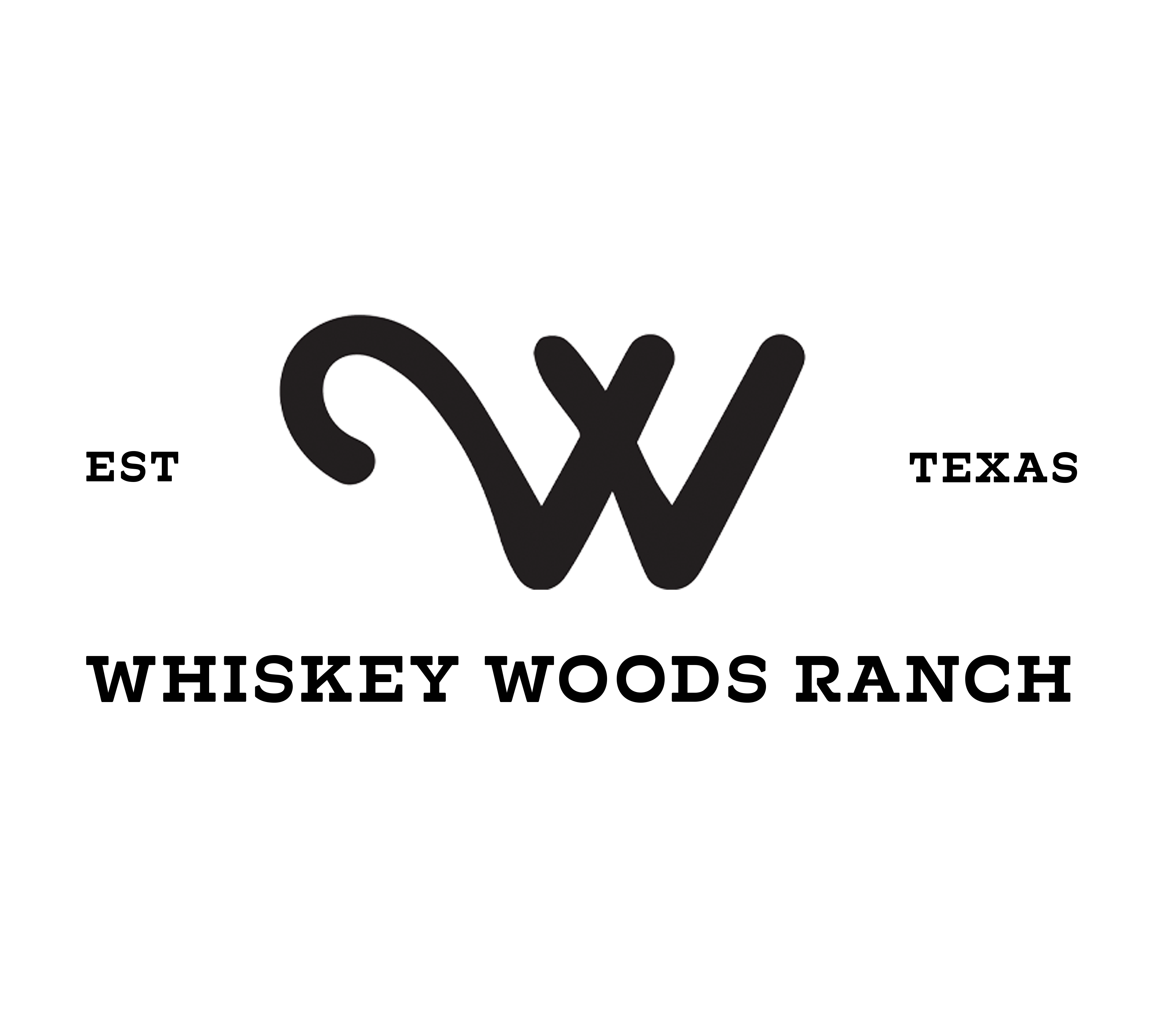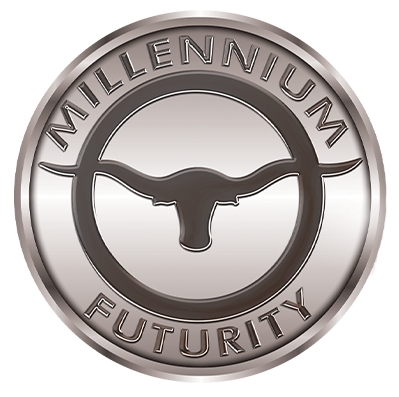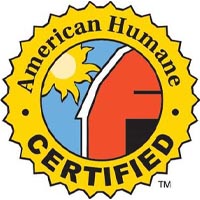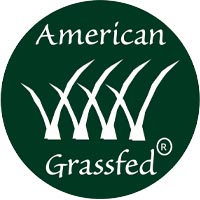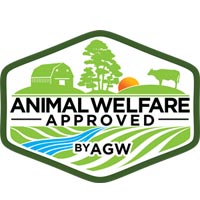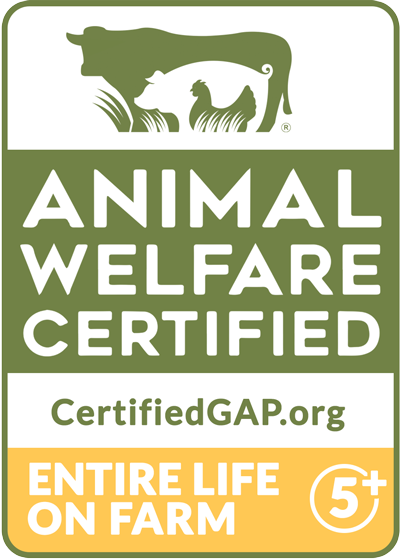
Beautiful Color
Correct Conformation
Breeding for Horn Size
The Texas Longhorn: A Chapter in American History
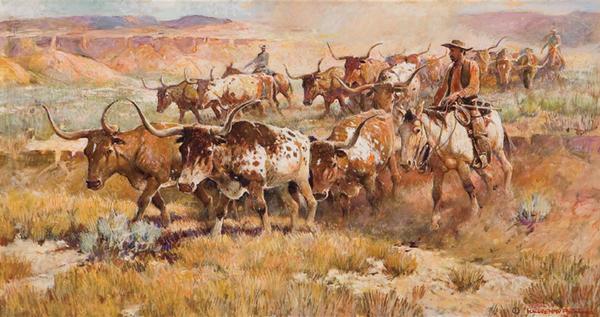
Driven north during the great trail drives of the 1860’s-1880’s, Longhorn cattle remain symbols of the Old West.
By: Jason M. Hartline | jason@whiskeywoodsranch.com
Texas Longhorns and the long drives northward to market made such an imprint on the 19th-century Western landscape that for many Americans today nothing else better defines the Old West. In his classic 1941 book The Longhorns, J. Frank Dobie writes that the Chisholm Trail, from Texas to Kansas, ‘initiated… the most fantastic and fabulous migration of animals controlled by man that the world has ever known or can ever know’ Between 1866 and 1890, some 10 million cattle were driven on the Chisholm and other trails out of Texas. ‘Without the Longhorns and the long drives,’ writes Don Worcester in The Texas Longhorn, ‘it is unlikely that the cowboy would have become such a universal folk hero.’
The roots of the Texas Longhorn go back to the late 1400s. Cattle were not indigenous to North America, but were introduced by gold-seeking Spanish conquistadors. The first Spanish explorers turned their dark, thin-legged, wiry Moorish-Andalusian cattle loose on the Caribbean Islands. These Andalusians, known as ‘black cattle,’ also produced Spanish fighting bulls. Left on their own, the cattle strayed, grew larger and soon turned wild. In the wild they thrived, growing heavy-boned, skinny and swift. Their long legs and long horns provided offensive weapons and defensive protection. They also developed a fiery temper and a malicious cleverness.
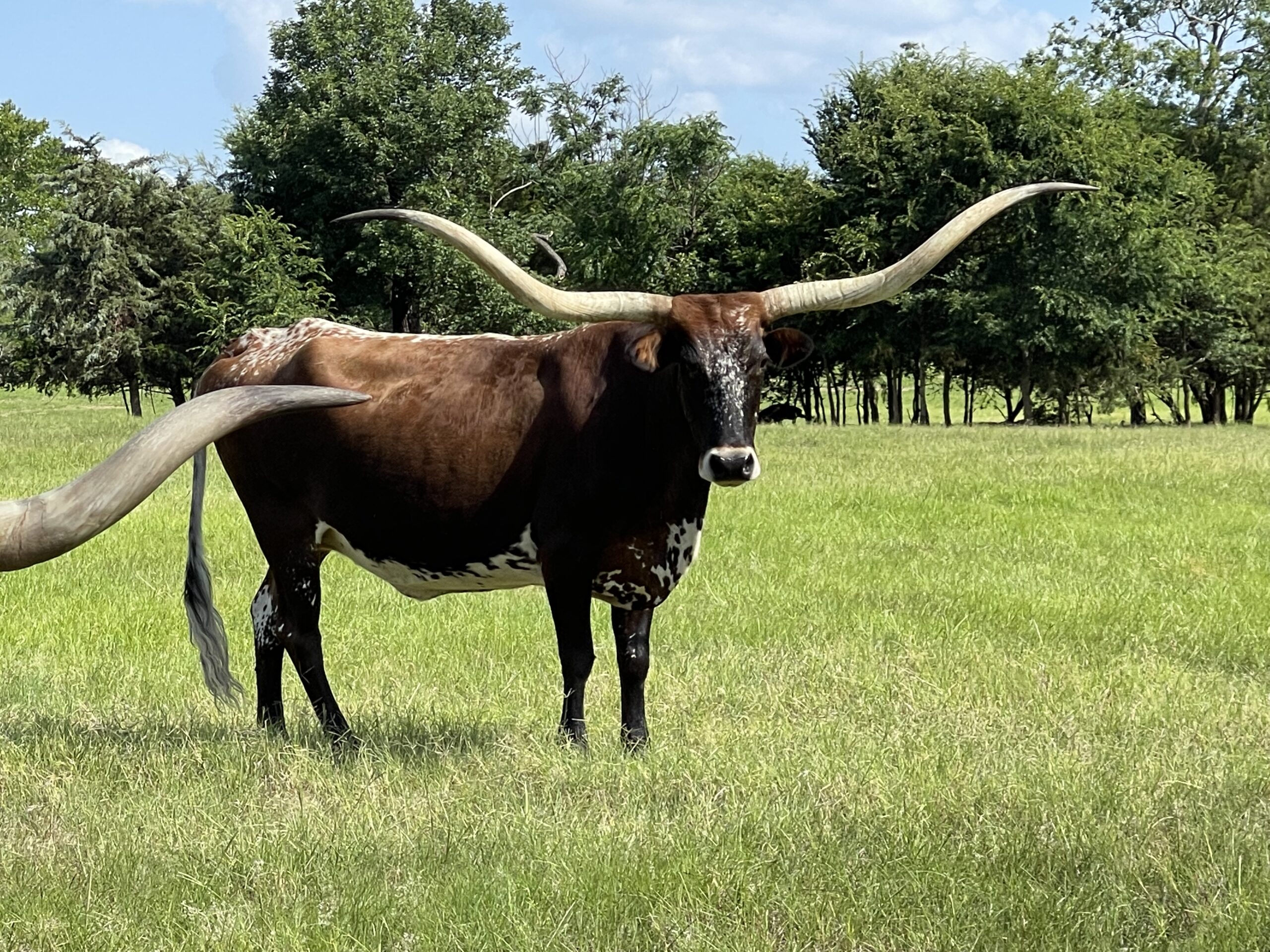
In 1521, Spanish sea captain Gregorio de Villalobos, defying a law prohibiting cattle trading in Mexico, left Santo Domingo with six cows and a bull and set sail to Veracruz, Mexico. The explorer Hernando Cortes also set sail with Criollo, or Spanish, cattle to have beef while on his expeditions. He branded his herds with three crosses-the first brand recorded in North America.
As more Spanish explorers headed north, their crippled and exhausted cows were left behind, loose on the trail, to fend for themselves. These Spanish explorers held to the Castilian tradition that grass was a gift of nature. Spanish cattlemen did not fence in their fields or their herds, and cattle easily wandered off to join the wild population. In the 1820s, settlers in Texas, then part of Mexico, primarily raised European breeds of cattle. The Texas Longhorn is the result of the accidental crossbreeding of escaped descendants of the Criollo cattle and the cows of early American settlers, including English Longhorns.
The easily identifiable result is a wild, slab-sided, ornery, multicolored bovine weighing between 1,000 and 1,500 pounds and having a horn spread of 4 to 7 feet. A Longhorn was considered mature at 10 years, and by then averaged 1,200 pounds. The combination of these characteristics made Longhorns hearty and self-reliant. One of their drawbacks was their meat. It was known to be lean, stringy and tough, but was still better than beef from Criollo cattle. The New York Tribune, on July 4, 1854, described Longhorn beef: ‘The meat is fine-grained and close, somewhat like venison. It is apt to be a little tough.’ These feral cattle, being excellent swimmers, easily crossed the sluggish Rio Grande, but generally were stopped by the more turbulent Red River. By the Mexican War, 1846-1848, the Texas Longhorn had become a recognizable type. Worcester, however, points out that the real Texas Longhorn was ‘a fairly distinct type that appeared in South Texas in large numbers only after the Civil War.’
The Longhorn did not have many enemies. Native Indians did not hunt the wild cattle; they preferred the meat of the tamer and easier to kill buffalo. The Indians also found more uses for buffalo hides and bones than they did for Longhorn leather. Wolves that followed the migrating buffalo herds remained shy and wary of the mean and often deadly Longhorn cattle. With the waning of the buffalo herds, the prairie grasses from Mexico to Canada became fodder for this new, more marketable animal. Most non-Indian Americans never developed a taste for buffalo, and more and more people were taking a liking to beef. A single Longhorn cow needed 10 acres of good plains grass a year for feed, 15 if the ground was dry and scrubby, and there were millions of acres available. Living on the rich Texas plains, a cow would normally have 12 calves in her lifetime, ensuring a steady supply for the new market.
During the Civil War, the unattended Longhorns proliferated. By 1865, about 5 to 6 million Longhorns resided in Texas, and most were unbranded. Many Confederate Army veterans returning from the war built up herds by claiming unmarked cattle and branding them. At that time a steer was worth about $4 in Texas-that was if you could find anyone with the $4. In Chicago, Cincinnati and other meat-packing and market towns up North, that same steer sold for about $40. The problem was getting the steers to market. More than 250,000 steers were driven toward Kansas and Missouri in 1866, but many didn’t make it because farmers, worried about tick fever, would turn them back, and thieves would strike the herds. In 1867, Abilene, Kan., at the railhead of the Kansas & Pacific, opened up as a major market and became the first of the cow towns. For the next two decades, Longhorns hit the trails on long but generally profitable drives. There had actually been long drives earlier-such as to New Orleans in the 1830s and to California during the gold rush-but the era of the great trail drives did not begin until after the Civil War.
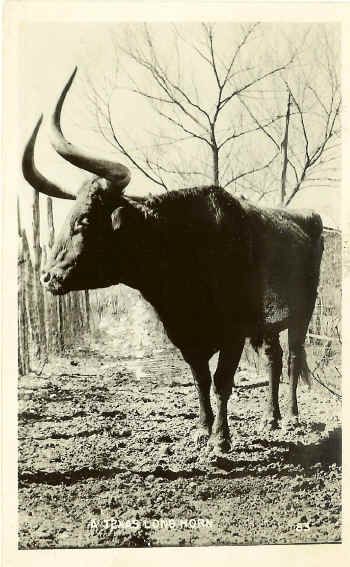
To build up herds, cattlemen often hired young ‘brush poppers.’ For $10 a month plus board, they combed the sage brush, popping out cattle as they went. After the spring roundup, the cattle herd was driven north. For this dangerous work a cowboy would earn $30 a month. A drive often covered 1,500 miles and took four to six months. The hours were long, the conditions brutal and the dangers very real. The outdoor work, mostly in the saddle, appealed to a certain breed of men-the American cowboy.
Unpredictable weather and swollen streams would break up the routine on the trails, and no single word could shake up a cow camp quicker than ‘Stampede!’ Every cowboy that ever trailed a herd was concerned about the threat and hazards of a stampede. It wouldn’t take much to get the Longhorns to run -a yelp from a coyote, the rattling of the chuck wagon’s pans, the hiss of a rattlesnake, a cowhand’s sneeze, the flair of a match. In Frederic Remington’s The Stampede the cause was lightning. ‘Stompede was the old Texian word, and no other cattle known to history had such a disposition to stampede as the Longhorns,’ writes Dobie.
In an instant, a calm herd could become a solid wave of nearly unstoppable alarm and panic. Normally a Longhorn steer would not target a man on horseback, but neither man nor horse was safe during a stampede. The steers themselves usually were at great risk. In Idaho, an 1889 stampede led to the deaths of one cowboy and 341 Longhorns. In Nebraska, in 1876, four cowboys tried to head off 500 stampeding steers. Only three of the men made it; all that was found of their friend was the handle to his revolver Another herd took to running when a tobacco shred from a cowboy’s pouch stuck in a steer’s eye. That unfortunate crew lost two cowboys, and a score were injured. Out of their herd of 4,000 head, 400 cattle were killed. One of the worst stampedes occurred in July 1876 near the Brazos River in Texas. Almost the entire herd plunged into a gully; more than 2,000 head were killed or missing.
When cattle stampeded they did not utter a sound, but a cacophony was raised by the clashing of horns and the crashing of hooves. The heat that the massed herd emitted was phenomenal.
Charles Goodnight, one of the 19th century’s most famous cattlemen, once described how the heat ‘almost blistered the faces’ of the men on the lee side of the herd. On a hot night, a steer that ran 10 miles might lose up to 40 pounds. There was only one thing, agreed most cowboys, that could be done to gain control of a runaway herd. That was to ride hellbent for leather toward the head of the herd and get the leaders milling, so that the herd would circle around into itself. The cowboys hoped the cattle would exhaust themselves during the process. The men would wave hats or slickers, beat ropes against chaps and sometimes fire pistols into the ground to try and keep the animals from running. A herd in flight could spread out over a vast area. If the herd ran for 25 miles, the cowboys might have to ride 200 miles rounding up the strays. Working alone, each man fanned out and began riding toward the herd’s new bedding ground. Sometimes small groups of cattle would be found and started back, but finding and driving singles was more often the case.
Every trail herd had its dominant steer, which by instinct strode to the front of the bunch to lead the way. Good lead steers were particularly valuable when crossing a river because hesitant leaders would cause most of the others to stop. If a steer did the job well, it would not be sold; it would be brought home to lead the other herds north. Charles Goodnight owned such a valuable steer in Old Blue, whom he had bought from cattleman John Chisum. During eight seasons, more than 10,000 head followed Old Blue to Dodge City- a one-way trip for them but not for Blue. Goodnight put a bell around Old Blue’s neck, and the other steers learned to follow the familiar ringing. Old Blue, according to range legend, ‘could find the best water, the best grass, and the easiest river crossings, and could even soothe a nervous herd during a storm with his reassuring bawl.’ After his last drive, he was retired to a permanent pasture and lived to be 20 years old. At his death his horns were mounted in a place of honor in the Goodnight ranch office. A good day’s progress for a herd was about 10 miles. Under favorable conditions, Longhorns put on weight while on the trail. Water was the most important necessity during a drive. A Longhorn could drink up to 30 gallons of water a day. Without plenty of fresh water, the cattle became irritable and would stampede.
The Texas cowboy admired the Longhorn because it fought him. An old bull when roped and mad could, with just a twist of his head, easily snap two ropes thrown over his horns. When a cowboy referred to a steer as ‘gentled,’ he meant the steer had become accustomed to the sight of a man on horseback, but was nowhere near tame.
The very success of the Longhorn led to its replacement. A trail drive often made a lot of money for the cattle owner. A steer sold for an average of $40, and trail expenses were about a dollar a head. The larger the herd, the larger the profits; the average was about 2,000 head. One of the biggest herds ever recorded left Texas in 1869 with 15,000 head. With so much money being made and such a large amount of beef being exported to Great Britain, wealthy investors from England and Scotland started looking at American ranches as investments. From there it was a small step to introduce their black Angus and white-faced Herefords in order to produce a beefier cow. Also, Shorthorns were brought in to upgrade herds of Longhorns. The Shorthorns were meatier but the Longhorns hardier, the Shorthorn-Longhorn cross produced a more marketable animal. By 1885, the old Longhorns seemed on their way to being bred out of existence. The end of the open range contributed greatly to the decline. Fenced pastures made it more economically sound to raise breeds that produced more beef and better beef, since hardiness and self-sufficiency were no longer nearly as important.
In the early part of the 20th century Longhorns neared extinction, but the breed was kept alive because a few Texas ranchers held onto small herds for largely sentimental reasons. And now Longhorns are making an amazing comeback. They are not just surviving symbols of the Old West but are cattle that are much in demand. ‘They are attractive to breeders today for the same reasons they were successful a century ago-their resistance to disease, ease of calving, longevity, and ability to thrive on poor pasture,’ Worcester writes. And there’s a new reason, too: They provide health-conscious Americans of the 21st century with lean beef.
Connect with Whiskey Woods Ranch
Interested in owning a Texas Longhorn, purchasing beef directly from Whiskey Woods Ranch, or just want to stay updated on Ranch news? Reach out!

